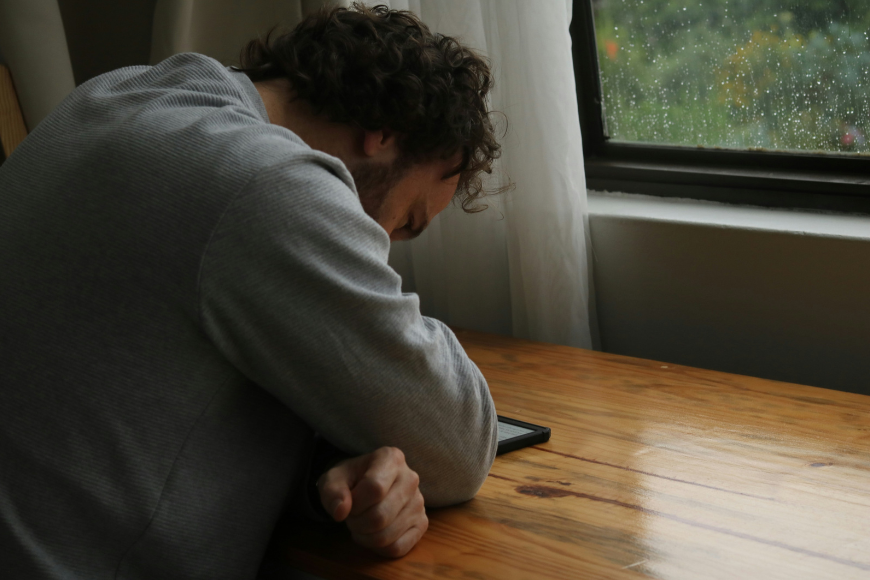Idaho, Iowa, Des Moines


For ADHDers, mistakes already feel bigger because we’ve often spent a lifetime hearing things like “Why can’t you just…?” or “You’re so disorganized.” We’ve been conditioned to not feel good enough. Even small slip-ups can trigger a flood of self-doubt, especially if you’ve internalized the idea that you have to work twice as hard to prove yourself.
Catastrophizing is the cherry on top. ADHD brains can hyper-focus on worst-case scenarios because they’re shiny and dramatic. Who needs horror movies when your brain is writing them for free?
ADHD and anxiety often go hand-in-hand, creating a frustrating cycle where each condition amplifies the other. ADHD makes it harder to filter out negative thoughts or regulate emotions, so when anxiety creeps in, it can feel extra intense and difficult to shake. Meanwhile, anxiety increases self-doubt and overthinking, which are already common struggles for people with ADHD. The result is a mental hailstorm where catastrophizing and jumping to conclusions thrive.
For example, imagine you miss a deadline. ADHD might make it difficult to stay organized and prioritize tasks, which leads to the initial slip-up. Anxiety then takes over, convincing you that this one mistake will ruin your career. Your brain jumps to the worst-case scenario because it yearns for a sense of control and struggles to keep things in perspective. That overwhelming sense of dread can make it even harder to refocus, setting the stage for more missed deadlines, more catastrophizing, and more anxiety. It’s a vicious loop, and it feels impossible to break out of when you’re in the thick of it.
What’s more, ADHD can make you hyper-aware of your mistakes and hypersensitive to criticism, real or imagined. This amplifies the belief that you're always screwing up or that everyone is judging you, which only adds more fuel to the anxiety-driven fire. Before you know it, you’re trapped in a mental loop where every thought feels urgent and catastrophic, and you’re left in an anxiety spiral.

So, what do you do when your brain starts pulling this crap?
1. Begin to Notice
The first step in changing any behavior is always to notice that behavior – or the emotion(s) that precede it. If you tend to not notice what’s happening until you’re already in the spiral, try thinking back to when it started. What happened? Did a certain situation or thought trigger catastrophic thinking or magnification? Were you overstimulated? Start building awareness of these patterns as they arise (or as soon after as possible) so you can start to put a little space between you and the reactions.
2. Check the Evidence
Ask yourself: What’s the actual evidence for this thought? For example, if you’re thinking, “I said something dumb in the meeting, and now everyone thinks I’m stupid,” pause and reflect. Did anyone actually say something negative, or are you projecting your fears onto them?
3. Celebrate ALL the Wins
Cognitive distortions can make celebrating your wins challenging. Pushing back against the instinct not to give yourself credit can be powerful. Finished a project on time? Text a friend and ask for a little cheerlead boost. Didn’t forget your friend’s birthday for the first time in three years? You’re killing it: give yourself a high five. ADHD brains need dopamine, so practicing celebrating your wins can help balance out the negativity bias.
4. Break the Catastrophe Spiral
When your brain starts writing its doomsday script, try this: write out the worst-case scenario (your boss hates you), the best-case scenario (they didn’t even notice), and the most likely scenario (they noticed but don’t care as much as you think). Seeing it on paper can help you realize how unlikely the worst-case actually is.
Magnification and catastrophizing are a serious struggle. And yeah, ADHD makes them worse. But you’re not powerless here. By recognizing these patterns and challenging them, you can stop your brain before the spiral takes over.
Remember, this all takes practice and time, so be patient with yourself. If you’re struggling to untangle these thoughts on your own, therapy can be a game-changer. Let’s figure it out together. I offer anxiety and ADHD therapy (including EMDR and talk therapy) and coaching services so you can get the support you need no matter where you live.
Stay tuned for part two, where we’ll dive into overgeneralization and all-or-nothing thinking – because life isn’t as black-and-white as your brain wants you to believe.
Danielle is an anxiety therapist and perfectionism coach. She specializes in helping busy millennials dial down their anxiety and ADHD, so they can perform at their best. Danielle has been featured on Apartment Therapy, SparkPeople, Lifewire, and Now Art World. When Danielle isn't helping her clients, she's playing video games or spending time with her partner and step children.


